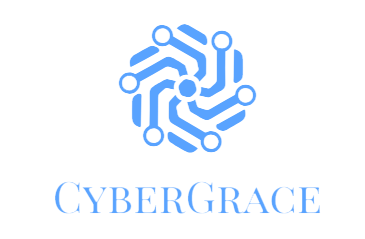- Electronic Health Records (EHRs) are digital versions of patient medical data, allowing for improved tracking and accuracy in care.
- Telemedicine enables remote diagnosis and treatment, allowing easier access to healthcare for those in rural areas.
- Wearable medical devices monitor vital signs and provide real-time data to physicians.
- 3D printing technology is being used to create complex medical devices and prosthetics.
- GPS tracking devices monitor patient location, medical equipment, and emergency response vehicles and are useful for research.
The medical sector is constantly evolving, with new technologies emerging regularly. Advancements in technology have helped healthcare providers offer better care to patients. Technology has been a major contributor to medical breakthroughs, from improving medical devices to enhancing patient care. This guide discusses five technologies you should utilize in the medical sector to enhance patient care and improve medical services.
1. Electronic Health Records (EHRs)
Electronic health records (EHRs) are a digital version of a patient’s medical history. EHRs have transformed how medical professionals track patient data, streamlining the process and improving patient outcomes. EHRs make it easy for physicians to access patient data in real time, eliminating the need for paper-based records. EHRs have improved the quality of care as medical professionals can easily access important patient information, such as allergies, medications, and medical conditions.
EHRs also help reduce errors in medication and treatment as physicians can easily identify potential complications, such as drug interactions or allergies. EHRs are secure, and medical professionals can only access patient data with the appropriate authorization. They also help streamline billing and insurance processes, making it easier for medical professionals to manage the financial aspects of patient care.
2. Telemedicine

Telemedicine refers to using telecommunication and information technologies to provide healthcare services remotely. Telemedicine has revolutionized healthcare delivery, allowing patients to receive medical attention from the comfort of their homes. Telemedicine technology has become increasingly popular over the last few years, especially during the COVID-19 pandemic, when face-to-face visits were impossible.
Telemedicine enables physicians to diagnose and treat patients remotely, reducing the need for patients to visit medical facilities. Patients can connect with healthcare professionals via video conferencing, and physicians can diagnose and treat patients remotely. Telemedicine has helped patients with chronic illnesses manage their conditions from home, reducing the need for hospital visits. It has also improved access to healthcare for patients in rural areas who previously had limited access to medical services.
3. Wearable Medical Devices
Wearable medical devices are medical-grade sensors worn on the body that monitor vital signs and health metrics, such as heart rate, blood pressure, and oxygen levels. Wearable medical devices are becoming increasingly popular, especially for patients with chronic illnesses who need to monitor their health regularly.
Wearable medical devices provide real-time data that physicians can use to diagnose and treat patients more effectively. They also help patients monitor their health and proactively manage their conditions. Wearable medical devices are small and easy to wear, making them comfortable for patients. They are also affordable, making them accessible to a larger population.
4. 3D Printing
3D printing technology is revolutionizing the medical sector, allowing for the creation of complex medical devices and prosthetics. 3D printing enables physicians to create patient-specific medical devices, reducing the need for generic products that may not fit every patient’s needs. 3D printing has also enabled medical professionals to create complex surgical models, helping them plan and execute surgeries more accurately.
3D printing has also made it possible to create prosthetic limbs that are affordable and customizable. The technology has significantly improved the quality of life for amputees, who can now receive prosthetics that fit perfectly and allow them to perform everyday tasks more easily.
5. GPS Tracking Devices

GPS tracking devices have become increasingly popular in the medical sector. This is because they can provide medical personnel with real-time data on patients’ locations, vital signs and equipment.
Here are some common uses of GPS-tracking devices in the medical sector:
Track Patients with Dementia or Alzheimer’s Disease
GPS tracking devices allow caregivers to monitor the location of their loved ones who may suffer from dementia or Alzheimer’s disease and could wander off. These devices provide real-time data and are easy to use, allowing family members to take immediate action if a patient goes missing.
Monitor Medical Equipment
GPS tracking devices can also be used to monitor medical equipment. Medical device tracking is important for hospitals and healthcare facilities, as it helps them keep track of their expensive equipment. These devices provide real-time data on the location and condition of medical equipment, allowing medical personnel to locate items and prevent theft or loss easily.
Track Emergency Response Vehicles
GPS tracking devices can monitor the location of ambulances and other emergency response vehicles, ensuring that medical professionals can arrive at an accident or illness scene quickly. This improves patient care and saves lives.
Improve Medical Research
Researchers can use GPS tracking devices to study patients’ movement patterns with certain illnesses, such as Parkinson’s or diabetes. This data can help researchers understand how diseases work and develop more effective treatments. In short, GPS tracking devices are essential tools for improving medical research.
Final Words
Technology has transformed the medical sector, improving patient outcomes and enhancing the quality of care. Electronic health records, telemedicine, wearable medical devices, 3D printing, and GPS tracking devices are just a few technologies you should utilize in the medical sector. By leveraging these technologies, medical professionals can provide better care to patients, improve efficiency in medical facilities, and drive medical breakthroughs. As technology evolves, the medical sector must keep pace to deliver the highest quality of care possible.

